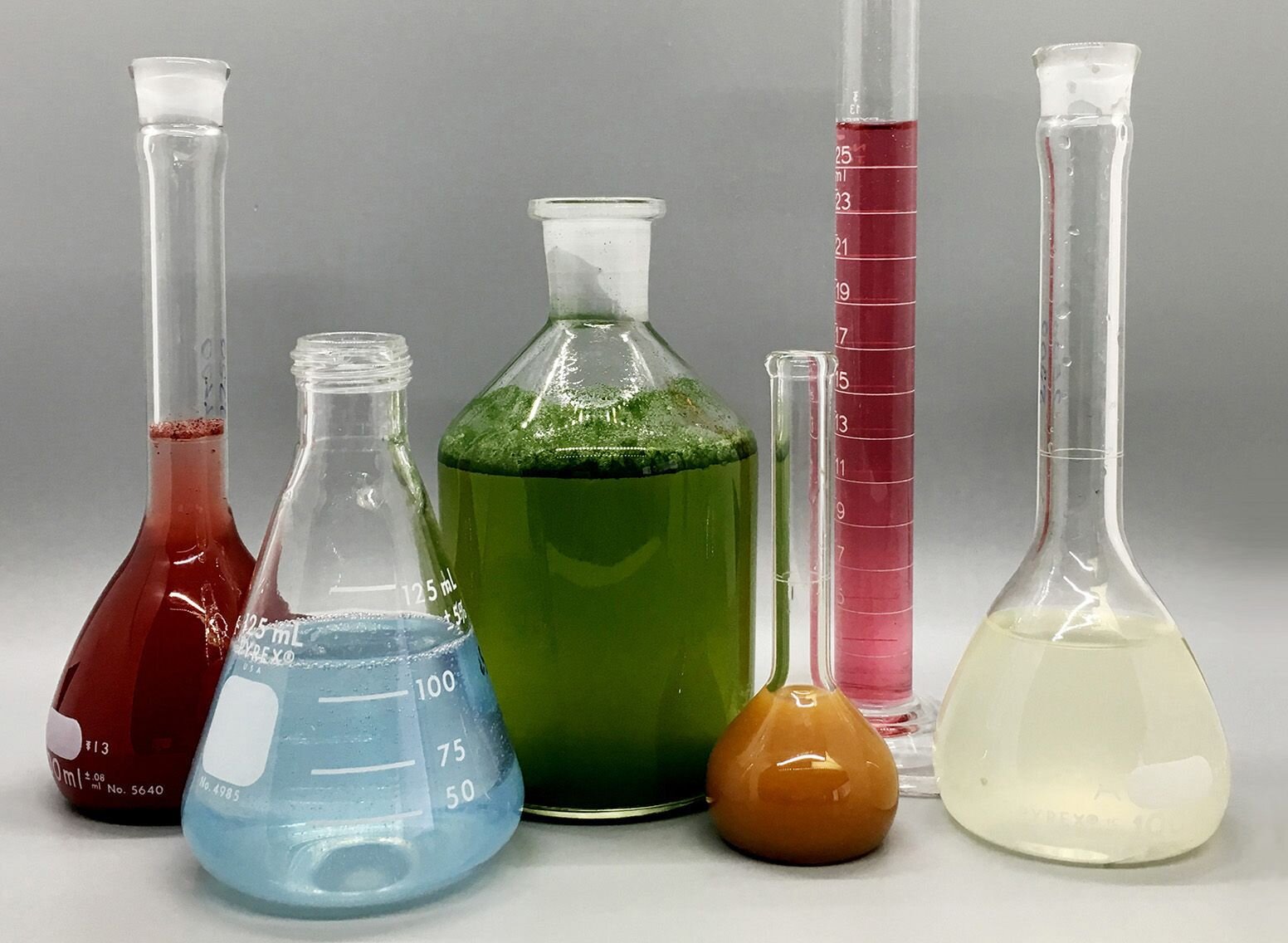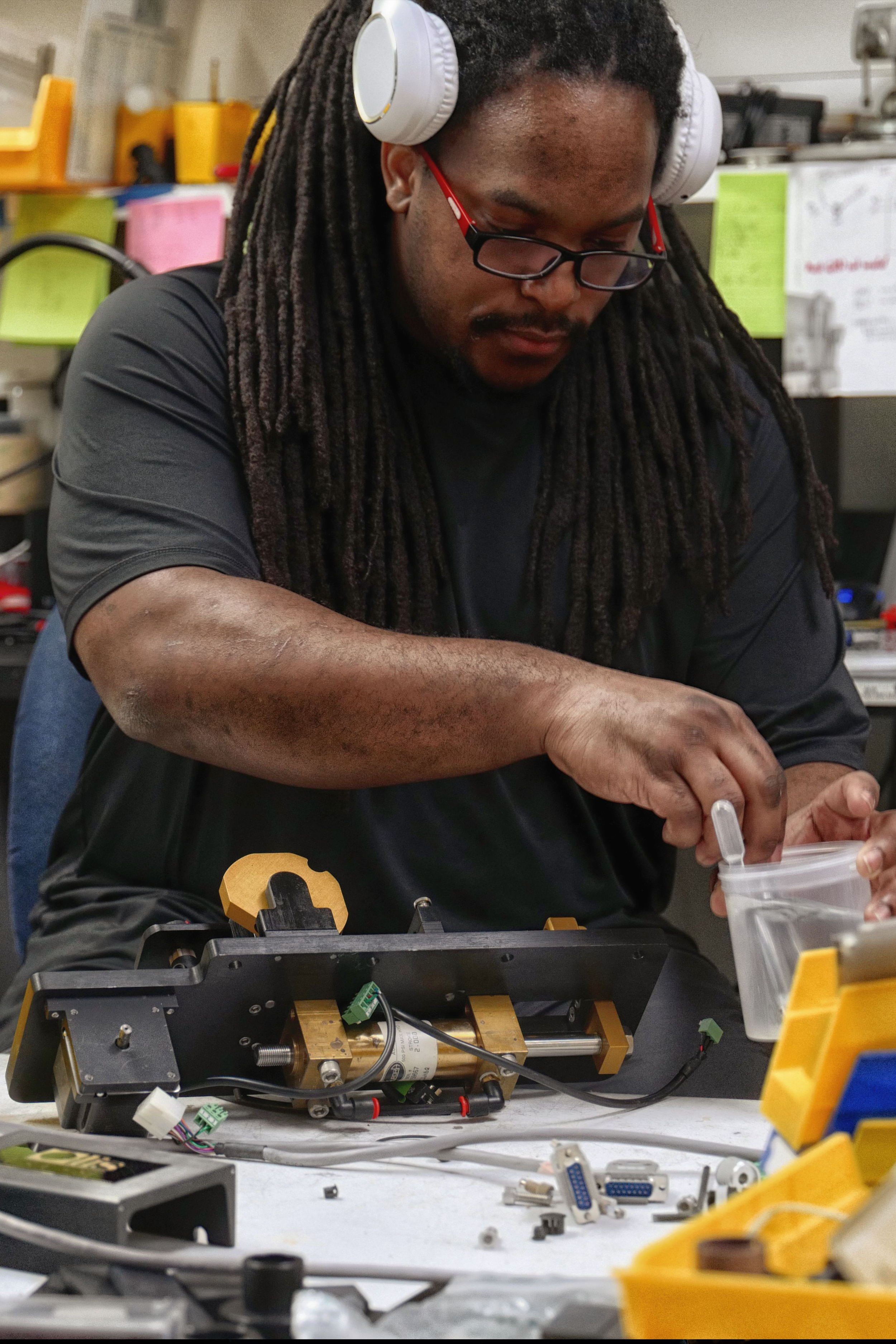The Single Strategy To Use For Spectrophotometers
The Single Strategy To Use For Spectrophotometers
Blog Article
The Facts About Uv/vis/nir Uncovered
Table of ContentsUv/vis Things To Know Before You Get ThisFacts About Spectrophotometers RevealedHow Circular Dichroism can Save You Time, Stress, and Money.Getting The Spectrophotometers To WorkSome Known Factual Statements About Circularly Polarized Luminescence Spectrophotometers Fundamentals ExplainedNot known Details About Uv/vis/nir What Does Uv/vis Mean?The Best Strategy To Use For Circularly Polarized LuminescenceHow Circular Dichroism can Save You Time, Stress, and Money.How Uv/vis can Save You Time, Stress, and Money.Uv/vis Things To Know Before You BuyAll about Circularly Polarized Luminescence
It is then scanned through the sample and the reference solutions. Portions of the event wavelengths are sent through, or reflected from, the sample and the referral. Electronic circuits convert the relative currents into direct transmission percentages and/or absorbance/concentration values.The transmission of a referral compound is set as a standard (datum) value, so the transmission of all other compounds are taped relative to the preliminary "zeroed" compound. The spectrophotometer then converts the transmission ratio into 'absorbency', the concentration of particular components of the test sample relative to the initial compound.
Considering that samples in these applications are not easily available in large amounts, they are particularly matched to being examined in this non-destructive strategy. In addition, valuable sample can be saved by using a micro-volume platform where as low as 1u, L of sample is needed for total analyses. A quick description of the procedure of spectrophotometry consists of comparing the absorbency of a blank sample that does not include a colored compound to a sample which contains a colored substance.
The Main Principles Of Uv/vis/nir
In biochemical experiments, a chemical and/or physical property is chosen and the treatment that is used is particular to that home in order to obtain more details about the sample, such as the amount, purity, enzyme activity, and so on. Spectrophotometry can be utilized for a variety of techniques such as identifying optimal wavelength absorbance of samples, identifying optimum p, H for absorbance of samples, determining concentrations of unknown samples, and identifying the p, Ka of various samples.: 21119 Spectrophotometry is likewise a useful process for protein purification and can also be utilized as an approach to create optical assays of a substance.
It is possible to understand the concentrations of a 2 component mixture utilizing the absorption spectra of the standard options of each element. To do this, it is required to know the extinction coefficient of this mix at two wave lengths and the termination coefficients of services that include the known weights of the 2 components.

Circularly Polarized Luminescence - An Overview
Many spectrophotometers are utilized in the UV and noticeable areas of the spectrum, and some of these instruments likewise run into the near-infrared Region. The concentration of a protein can be estimated by determining the OD at 280 nm due to the presence of tryptophan, tyrosine and phenylalanine (https://www.kickstarter.com/profile/olisclarity1/about).
This method requires a spectrophotometer capable of determining in the UV region with quartz cuvettes.: 135 Ultraviolet-visible (UV-vis) spectroscopy includes energy levels that excite electronic transitions. Absorption of UV-vis light thrills molecules that are in ground-states to their excited-states.
These curves can be used to check a brand-new batch of colorant to inspect if it makes a match to specifications, e
Traditional visible conventional noticeable can not detect if discover colorant or the base material has fluorescence. This can make it hard to handle color problems if for example one or more of the printing inks is fluorescent. There are two major setups for visual spectrum spectrophotometers, d/8 (spherical) and 0/45.
Scientists utilize this instrument to determine the quantity of substances in a sample. If the substance is more focused more light will be soaked up by the sample; within little varieties, the Beer, Lambert law holds and the absorbance between samples vary with concentration linearly. When it comes to printing measurements two alternative settings are commonly used- without/with uv filter to manage much better the impact of uv brighteners within the paper stock.
Some Ideas on Circularly Polarized Luminescence You Should Know
Some applications need small volume measurements which can be performed with micro-volume platforms. As described in the applications section, spectrophotometry can be used in both qualitative and quantitative analysis of DNA, RNA, and proteins. Qualitative analysis can be utilized and spectrophotometers are used to tape-record spectra of compounds by scanning broad wavelength areas to determine the absorbance homes (the strength of the color) of the substance at each wavelength.

The smart Trick of Circularly Polarized Luminescence That Nobody is Discussing
One significant element is the type of photosensors that are readily available for various spectral areas, but infrared measurement is also challenging because essentially whatever emits IR as thermal radiation, especially at wavelengths beyond about 5 m. Another problem is that many moved here materials such as glass and plastic soak up infrared, making it incompatible as an optical medium.
Samples for IR spectrophotometry might be smeared in between 2 discs of potassium bromide or ground with potassium bromide and pushed into a pellet. Where liquid services are to be measured, insoluble silver chloride is utilized to construct the cell. Spectroradiometers, which operate practically like the visible region spectrophotometers, are created to determine the spectral density of illuminants. 2013. p. 13. Allen, DW; Cooksey, C; Tsai, BK (Nov 13, 2009). "Spectrophotometry". Retrieved Dec 23, 2018. Ninfa AJ, Ballou DP, Benore M (2010 ). Basic Lab Techniques for Biochemistry and Biotechnology (second ed.). Hoboken: Wiley & Sons. ISBN 9780470087664. OCLC 488246403. Schwedt G (1997 ). The vital guide to analytical chemistry.
Chichester, NY: Wiley. pp. 1617. ISBN 9780471974123. OCLC 36543293. Ninfa AJ, Ballou DP (2004 ). Basic lab methods for biochemistry and biotechnology. Hoboken: Wiley. p. 66. ISBN 9781891786006. OCLC 633862582. Rendina G (1976 ). Philadelphia, PA: W. B. Saunders Company. pp. 46-55. ISBN 0721675506. OCLC 147990. Oke, J. B.; Gunn, J. E.
Some Known Factual Statements About Uv/vis/nir
"Secondary basic stars for outright spectrophotometry". The Astrophysical Journal. 266: 713. Bibcode:1983 Ap, J..266..713 O. doi:10. 1086/160817. Ishani, G (2006 ). "The first industrial UV-vis spectrophotometer". p. 100. Retrieved Dec 23, 2018. Simoni, RD; Hill, RL; Vaughan, M; Tabor, H (Dec 5, 2003). "A Classic Instrument: The Beckman DU Spectrophotometer and Its Developer, Arnold O.
278 (49 ): e1. doi:. ISSN 1083-351X. Beckman, A. O.; Gallaway, W. S.; Kaye, W.; Ulrich, W. F. (March 1977). "History of spectrophotometry at Beckman Instruments, Inc". Analytical Chemistry. 49 (3 ): 280A300A. doi:10. 1021/ac50011a001. "Hewlett Packard: Substance Identification with HP 8450 A UV Visible Spectrophotometer". Analytical Chemistry. 51 (12 ): 1188A1189A. 1979-10-01.
1021/ac50048a728. ISSN0003-2700. Ninfa AJ, Ballou DP, Benore M (2015 ). Essential Laboratory Techniques for Biochemistry and Biotechnology (3, rev. ed.). Hoboken, NJ: Wiley & Sons. p. 77. ISBN9780470924525. OCLC915641828. "Fully Automatic Double Beam - Atomic Absorption Spectrophotometer (AA 8000)". Lab Equipment. Labindia Analytical Instruments Pvt. Ltd. "Spectrophotometry Applications and Fundamentals".
Our Circularly Polarized Luminescence Diaries
Retrieved Jul 4, 2018. Trumbo, Toni A.; Schultz, Emeric; Borland, Michael G.; Pugh, Michael Eugene (April 27, 2013). "Applied Spectrophotometry: Analysis of a Biochemical Mixture". Biochemistry and Molecular Biology Education. 41 (4 ): 24250. doi:10. 1002/bmb. 20694. PMID 23625877. (PDF). www. mt.com. Mettler-Toledo AG, Analytical. 2016. Recovered Dec 23, 2018. Cortez, C.; Szepaniuk, A.; Gomes da Silva, L.
"Checking Out Proteins Filtration Methods Animations as Tools for the Biochemistry Mentor". Journal of Biochemistry Education. 8 (2 ): 12. doi:. Garrett RH, Grisham CM (2013 ). Biochemistry. Belmont, CA: Cengage. p. 106. ISBN 978-1133106296. OCLC 801650341. Vacation, Ensor Roslyn (May 27, 1936). "Spectrophotometry of proteins". Biochemical Journal. 30 (10 ): 17951803. doi:10. 1042/bj0301795.
PMID 16746224. Hermannsson, Ptur G.; Vannahme, Christoph; Smith, Cameron L. C.; Srensen, Kristian T.; Kristensen, Anders (2015 ). "Refractive index dispersion sensing utilizing a variety of photonic crystal resonant reflectors". Applied Physics Letters. 107 (6 ): 061101. Bibcode:2015 Ap, Ph, L. 107f1101H. doi:10. 1063/1. 4928548. S2CID 62897708. Mavrodineanu R, Schultz JI, Menis O, eds.
See This Report on Circular Dichroism
U.S. Department of Commerce National Bureau of Standards unique publication; 378. Washington, D.C.: U.S. National Bureau of Standards. p. 2. OCLC 920079.
The process begins with a controlled light that lights up the evaluated sample. When it comes to reflection, as this light engages with the sample, some is taken in or discharged. The produced light travels to the detector, which is examined, measured, and provided as industry-standard color scales and indices.
All terms are assessed over the visible spectrum from 400 to 700 nm. In the case of transmission, when the light connects with the sample, it is either taken in, reflected, or sent.
Circularly Polarized Luminescence - The Facts
Examples include APHA (American Public Health Association) for watercolor and purity analysis, ASTM D1500 for petrochemical color analysis, edible oil indices used in food, and color analyses of drinks. All terms are assessed over the noticeable spectrum from 400 to 700 nm.
Image Credit: Matej Kastelic/ Dr. Arnold J. Beckman and his associates at the National Technologies Laboratories initially developed the spectrophotometer in 1940. In 1935 Beckman established the business, and the discovery of the spectrophotometer was their most ground-breaking creation. Dr. Bruce Merrifield, a Nobel prize-winning biochemist, specified that the invention of the spectrophotometer was "probably the most important instrument ever established towards the development of bioscience." Before the discovery of the spectrophotometer, chemical analyses took weeks to finish, with 25% precision.
8 Simple Techniques For Circular Dichroism
Over time, scientists kept enhancing the spectrophotometer style to improve its performance. The UV abilities of the design B spectrophotometer were enhanced by replacing the glass prism with a quartz prism.
After 1984, double-beam variations of the device were designed. The addition of external software application with the provision of onscreen display screens of the spectra can be found in the 1990s. Usually, a spectrophotometer is made up of 2 instruments, specifically, a spectrometer and a photometer. A basic spectrophotometer consists of a light, a monochromator, a collimator for straight beam transmission, a cuvette to place a sample, and a photoelectric detector.
All About Spectrophotometers
There are different types of spectrophotometers in various sizes and shapes, each with its own function or functionality. A spectrophotometer figures out just how much light is reflected by chemical parts. circularly polarized luminescence. It measures the difference in light intensity based on the total amount of light presented to a sample and the amount of light beam that travels through the sample solution
A spectrophotometer is used to figure out the concentration of both colorless and colored solutes in an option. This instrument is used to determine the rate of a reaction.
Report this page